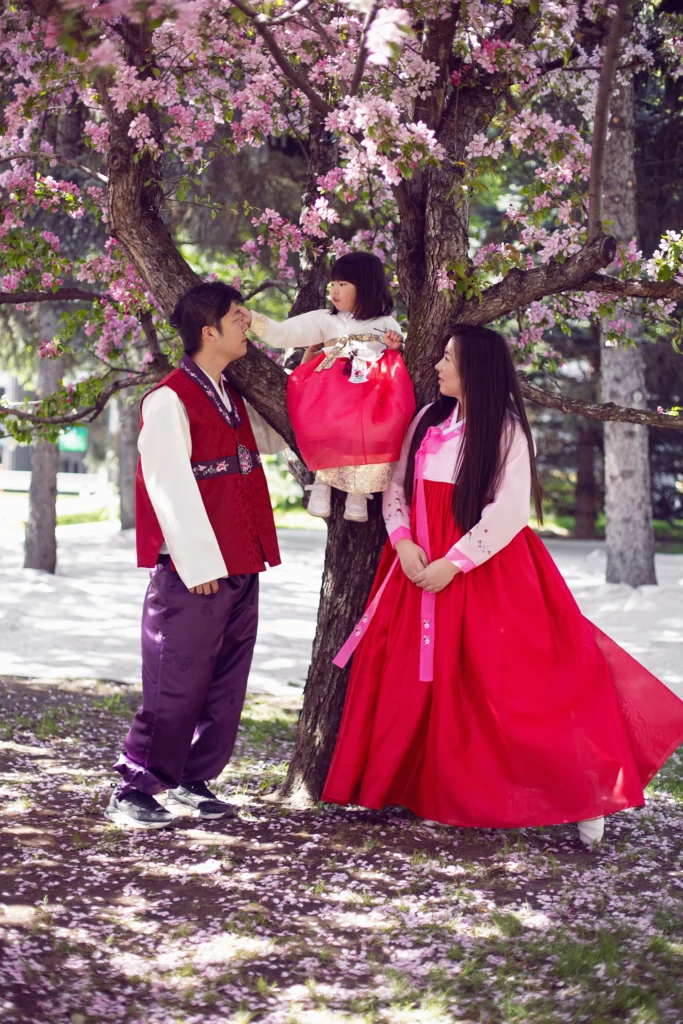Estimated Reading Time: 10 – 12 minutes (2837 words)
Introduction
Scroll through Instagram or YouTube, and you’ll likely come across scenes of tear-jerking love confessions, stylish protagonists, or the dreamy cityscapes of Seoul. These clips aren’t from Bollywood or Hollywood — they’re from Korean dramas (K-Dramas), which have quietly transformed into a mainstream sensation in India.
For decades, Indian audiences relied on Bollywood blockbusters and endless TV serials for entertainment. But as storylines became repetitive and stretched, viewers — especially Gen Z and millennials in metro and Tier-2 cities — craved something fresh, concise, and emotionally engaging.
In this blog, we’ll explore how K-Dramas are booming in India, why they resonate so deeply, the business opportunities for OTT platforms and brands, and what the next decade could bring. Whether you’re a viewer, creator, or marketer, you’ll discover practical insights to ride this unstoppable cultural wave.
Table of Contents
- Market Trends & Data: The K-Drama Explosion
- Why K-Dramas Appeal to Indian Audiences
- Impact on India’s OTT & Entertainment Landscape
- 10 Year Outlook: What’s Next for K-Dramas in India
- FAQs
- Conclusion
- Summary & Key Takeaways
- surprise gift
- References & Sources

1. Market Trends & Data: The K-Drama Explosion
Statistics & Growth:
- According to a Netflix India study, the number of Indians watching K-Dramas surged by 370% in 2020 compared to 2019.
- Nielsen’s March 2025 OTT report highlights exceptional engagement among younger Indians, especially in tier-2 and tier-3 cities, with mobile viewership soaring for titles like When Life Gives You Tangerines.
- A survey by Korea Centre (2025) found that among a sample of Indian youth, 61.7% said Korean entertainment had a moderate influence on their lives, while 16.7% believed it had a significant influence.
- In 2024-25, Euromonitor / OTT analytics reported an extraordinary jump in K-drama viewership on platforms like Netflix and Viu—some platforms saw over 300% growth year-on-year.
- Retail and lifestyle data show that Hallyu fans in India number over 15 million, with 156 million fans globally. Merchandise and cosmetics saw parallel growth due to cross-cultural interest.
Analysis Box: Key Stats
| Metric | Value |
| YoY increase in Indians watching K-Dramas (2020 vs 2019) | 370% |
| Influence of Korean entertainment among Indian youth (survey) | ~62% moderate, ~17% significant |
| Growth in K-Drama viewership in 2024–25 (on OTTs) | 300–400% YoY |
| Indian Hallyu fans | ~15 million |
| Global Hallyu fans | ~156 million |
2. Why K-Dramas Appeal to Indian Audiences
The growing popularity of Korean dramas (K-Dramas) in India isn’t just a passing fad—it reflects deeper cultural connections and shifting entertainment habits. Let’s explore the key reasons why Indian viewers are embracing K-Dramas so passionately.
2.1 Emotional Storytelling That Resonates
At the heart of every K-Drama lies a strong narrative built on emotions—love, family, friendship, sacrifice, and resilience. Unlike many Western shows that rely heavily on action or special effects, K-Dramas emphasize character development and emotional arcs. Indian audiences, who are deeply familiar with the melodramatic and family-centric storytelling of Bollywood and daily soaps, find comfort in the way K-Dramas balance romance with moral lessons and heartfelt narratives. This emotional depth has made titles like Crash Landing on You and It’s Okay to Not Be Okay household names among Indian youth.
2.2 Relatable Themes with a Fresh Perspective
Indian culture, like Korean culture, places high value on family, respect for elders, education, and community bonds. K-Dramas often highlight these very themes, making them feel surprisingly familiar. At the same time, the backdrop of modern Korean cities, cutting-edge technology, and stylish storytelling gives Indian viewers a refreshing new lens. It’s a blend of relatability and novelty that keeps audiences coming back.
2.3 Romance Without Excess
Indian viewers, particularly younger audiences, are drawn to the “clean romance” often portrayed in K-Dramas. Relationships unfold with emotional intensity but are typically portrayed with restraint—focusing more on chemistry, longing looks, and heartfelt dialogue than on physical intimacy. For many Indian families, this aligns well with cultural norms, making K-Dramas a form of entertainment that can be enjoyed across generations.
2.4 Accessibility Through Dubbing & Subtitles
A major driver of K-Drama adoption in India is the availability of regional language dubs (Hindi, Tamil, Telugu) and high-quality English subtitles. OTT platforms like Netflix, Viu, and ZEE5 have invested heavily in making K-Content accessible to audiences across India, including Tier-2 and Tier-3 cities. According to Nielsen’s 2025 OTT report, young Indians in smaller towns are driving a surge in K-Drama viewership, thanks to mobile streaming and affordable data plans (Financial Express).
2.5 Lifestyle, Fashion & Aspirational Culture
Beyond the plotlines, K-Dramas introduce Indian audiences to the aesthetics of Korean culture—from skincare routines and fashion trends to food like Korean BBQ and kimchi. This exposure has spurred demand for K-beauty products and K-inspired lifestyle choices in India. According to a report by IndianRetailer.com, India is home to over 15 million K-Drama fans, many of whom actively seek out Korean cosmetics, merchandise, and language learning opportunities.
3. Impact on India’s OTT & Entertainment Landscape
3.1 OTT Platforms & Strategy Shifts
- Netflix India increased licensing of Korean titles and even co-produced originals like Queen of Tears, contributing to its top-ranked non-English global listings.
- MX Player, Viu, and ZEE5 have invested significantly in K-Drama licensing and localized dubbing to capture Tier-2/Tier-3 audience growth.
3.2 Indian Remakes & Cultural Collaborations
- Duranga (ZEE5) is an Indian adaptation of the Korean drama Flower of Evil, showing crossover influence in storytelling.
- Indian TV serial formats are showing signs of influence: shorter seasons, stylish aesthetics, and complex character arcs inspired by the K-Drama model.
3.3 Broader Cultural Influence
The K-Drama surge extends to fashion, beauty products, language interest (Korean classes), and food culture—deepening cultural exchange.

4. 10-Year Outlook: What’s Next for K-Dramas in India
The K-Drama wave in India shows no signs of slowing down. If anything, industry analysts and streaming platforms predict that the next decade will solidify South Korean content as a mainstream entertainment choice, rivaling traditional Indian TV dramas and even Hollywood titles in certain genres. Here’s what the future could look like:
1. Growth of Regional Dubs and Local Language Integration
Currently, Netflix, ZEE5, and Viu offer K-Dramas dubbed in Hindi, Tamil, and Telugu. Over the next decade, we can expect to see expansion into regional languages like Bengali, Marathi, and Malayalam. With 65% of India’s population living in non-metro areas (financialexpress.com), this could unlock millions of new viewers.
2. Surge in Co-Productions & Indian Remakes
The success of Duranga (Wikipedia) — an Indian remake of Flower of Evil — signals a decade where cross-border storytelling will thrive. Expect more collaborations between Indian production houses and Korean studios, blending K-Drama aesthetics with local narratives. Rom-coms, thrillers, and historical dramas are likely to dominate, given their proven resonance with Indian audiences.
3. Integration of K-Culture Ecosystem
K-Dramas rarely exist in isolation—they bring K-pop, K-beauty, and Korean food along for the ride. According to a survey by Korea Centre, over 60% of young Indians feel influenced by Korean culture (koreacentre.org). In the coming years, we may see more Korean fashion brands entering Indian malls, K-pop concerts tied with drama launches, and local beauty startups drawing inspiration from Korean skincare routines.
4. OTT Strategy Evolution
Platforms will increasingly create K-Drama packages with localized pricing, special events, and interactive features like fan votes or live watch parties. India, already one of Netflix’s fastest-growing markets, could become a testing ground for global K-Drama premieres, especially after the massive 370% surge in 2020 viewership (papers.ssrn.com).
5. 10-Year Outlook: What’s Next for K-Dramas in India
- More co-productions between Indian and Korean studios
- Localized content with Korean aesthetics + Indian contexts
- Language fluency: Increased demand for Korean dubbing/subtitles
- Live-streamed K-Culture events in India (fan meets, concerts, drama conventions)
- Merch & Experience economy: Korean cafe chains, fan merchandise, beauty pop-ups
- Platform evolution: OTTs investing in “K-Drama bundles” or packages
5. FAQs: Everything You Need to Know About K-Dramas in India
1. Why are Korean dramas so popular in India?
Korean dramas (K-Dramas) have become a phenomenon in India because they blend emotionally rich storytelling with high-quality production values. Unlike traditional Indian soaps that often stretch endlessly, K-Dramas typically have 12–20 episodes with a clear beginning, climax, and resolution. This compact structure makes them binge-worthy for India’s increasingly mobile-first audience.
Beyond structure, K-Dramas hit the right emotional notes — romance, family bonds, sacrifice, and personal growth — themes that resonate deeply with Indian cultural values. The “clean romance” style, where chemistry is built through longing looks, subtle gestures, and emotional intimacy, also appeals to multi-generational households where shows are often watched together.
On top of this, their aesthetic appeal — stylish wardrobes, relatable urban settings, and catchy OSTs (original soundtracks) — adds aspirational value. Indians are not just watching stories; they are also discovering Korean fashion, music, and lifestyle through dramas.
2. When did the K-Drama wave begin in India?
The K-Drama journey in India started in the early 2000s, when cable channels in Manipur, Nagaland, and West Bengal aired dubbed versions of classics like Autumn in My Heart and Winter Sonata. These shows found a niche following but didn’t reach the national mainstream.
The real turning point came during the COVID-19 lockdown in 2020. With theaters closed and daily soaps paused, Indian viewers explored OTT platforms. Netflix, Viu, and ZEE5 aggressively promoted K-Dramas like Crash Landing on You, Itaewon Class, and Goblin. Social media amplified the buzz, making K-Dramas a mainstream urban trend. By 2021, the Hallyu wave (Korean Wave) had firmly planted its roots across India, cutting across age groups and geographies.
3. What’s the biggest growth figure for Indian K-Drama viewership?
The standout statistic comes from Netflix India, which reported a 370% surge in K-Drama viewership between 2019 and 2020. This was one of the sharpest spikes for any content category during the pandemic.
Beyond Netflix, platforms like Viu and MX Player also reported triple-digit growth, especially among Tier-2 and Tier-3 cities, driven by cheap data plans and mobile penetration. Today, India is counted among the top 10 global markets for K-Drama consumption, according to industry trackers.
4. Which genres of K-Dramas do Indians like most?
Indian audiences gravitate toward:
- Romance & melodrama (Crash Landing on You, True Beauty)
- Fantasy & supernatural themes (Goblin, Hotel Del Luna)
- Slice-of-life stories (Reply 1988, Hospital Playlist)
- Youth & campus dramas (Dream High, Extraordinary You)
- Thrillers & crime dramas (Flower of Evil, Vincenzo)
The common thread is emotionally immersive storytelling, something that Bollywood and Indian TV fans already appreciate. Younger Indians are especially fond of school/campus dramas, while families enjoy melodramas that focus on generational conflict and values.
5. Are K-Dramas dubbed in Indian languages?
Yes. Dubbing and subtitling have been critical for adoption in India. Most major OTT platforms offer K-Dramas dubbed in Hindi, Tamil, and Telugu, along with high-quality English subtitles. Netflix has also experimented with Bengali and Marathi subtitling for select shows, recognizing the demand in regional markets.
This localization strategy has opened up K-Dramas to non-English speaking audiences in Tier-2/Tier-3 cities, which now account for the fastest-growing viewership segments.
6. Have any K-Dramas been remade in India?
Yes. A notable example is ZEE5’s Duranga, which is an official remake of the Korean hit Flower of Evil. The remake received positive attention, showing that Korean storylines can be adapted successfully into Indian contexts while retaining their emotional depth.
Given its success, more Indian producers are eyeing licensed adaptations of popular K-Dramas. Genres like crime thrillers, family dramas, and youth romances are ripe for cross-border remakes. Expect to see at least 5–10 Indian adaptations of Korean shows in the next decade.
7. Can marketers monetize the K-Drama trend?
Absolutely. The rise of K-Dramas has created a fertile ground for affiliate marketing, brand tie-ups, and content monetization. Some examples:
- OTT affiliate links: Promoting subscriptions to Netflix, Viu, or ZEE5 through K-Drama guides.
- K-Beauty & fashion products: Using influencer marketing to sell skincare routines or outfits inspired by hit dramas.
- Sponsored posts: Partnering with OTT platforms to run “Top 10 K-Drama” style blogs.
- Lead magnets: Offering free PDFs like “K-Drama Starter Pack” or “K-Drama Watchlist Tracker” to capture emails and upsell.
Marketers who understand the fan community can tap into 15M+ Indian Hallyu fans, according to industry estimates.
8. What is the “Hallyu wave”?
“Hallyu,” or the Korean Wave, refers to the global spread of Korean culture across entertainment, music, beauty, and food. It started in the late 1990s with K-Dramas and expanded with K-Pop groups like BTS and BLACKPINK.
In India, the Hallyu wave is not just about watching shows. It’s influencing fashion choices, beauty routines, food preferences, and even career aspirations (such as learning Korean or studying in South Korea). The Korean Cultural Centre in Delhi has reported exponential growth in students signing up for Korean language courses in the last five years.
9. Are Tier-2/Tier-3 cities in India watching K-Dramas?
Yes, and they are driving much of the growth. Nielsen’s 2025 OTT survey revealed that mobile OTT consumption of K-Dramas is booming outside metros. Affordable smartphones, cheap data, and dubbed content have made K-Dramas accessible to a new wave of viewers in Lucknow, Jaipur, Coimbatore, and beyond.
This means the next decade of growth won’t just come from metros like Delhi and Mumbai, but from small-town India, where viewers are hungry for fresh global content that feels both aspirational and relatable.
10. What’s next for K-Dramas in India?
The next 10 years will be transformative:
- More co-productions between Indian and Korean studios
- Expansion of dubbing/subtitling into all major Indian languages
- Merchandising & lifestyle integration (Korean cafés, K-beauty pop-ups, drama fan conventions)
- Hybrid storytelling with Indo-Korean collaborations targeted at both markets
- Education & cultural exchange — more Indians learning Korean, more Korean institutes opening locally
In short, K-Dramas will move from being a trend to becoming a mainstream pillar of Indian entertainment.
Bonus FAQ: How are Indian youth influenced by K-Dramas?
Surveys show that over 60% of Indian youth feel moderately influenced by Korean entertainment, with 16–17% saying it has a strong impact on their lives. This influence extends beyond watching dramas — it includes trying Korean skincare products, learning Korean phrases, following K-Pop, and even aspiring to travel or study in Korea.
This cultural impact is stronger than ever before, and it shows that K-Dramas are shaping not only how Indians watch TV but also how they live, dress, and socialize.

6. Conclusion
The meteoric rise of Korean dramas in India marks a defining shift in the country’s entertainment consumption. From a niche fascination to cultural mainstream, K-Dramas now shape how Indians watch, talk about, and even live entertainment—altering storytelling norms, marketing strategies, and consumer preferences.
For bloggers, creators, OTT platforms, and brands, the K-Drama wave offers a rare convergence of cultural resonance and commercial potential. By leaning into quality, localization, and community, you can ride this wave—with lasting impact.
7. Summary / Key Takeaways
- K-Dramas have seen explosive growth in India: Netflix viewership rose 370% in 2020.
- Accessibility (dubbing/subtitles), emotional storytelling, and high production values fuel their appeal.
- OTT platforms are heavily investing in licensing, dubbing, and co-producing K-Content.
- Indian entertainment is adapting—remakes like Duranga and shorter season formats are emerging.
- The Korean Wave extends to beauty, fashion, and consumer behavior—opening up affiliate and brand opportunities.
- The next decade will likely see deeper cultural integration, localized K-Drama content, and expanded merchandising.
8. Your 6-Step K-Drama Glow Routine
Docs link – https://shrinkme.top/RFbg7
9. References & Sources with Links
- Netflix viewership rise 370% (2019–2020) — SSRN “The Rise of Korean Wave in India and Its Influence…” SSRN
- Nielsen OTT report March 2025 — Financial Express “Young Indians hooked on Korean shows…” The Financial Express
- Youth influence survey — Korea Centre “K-Wave in India: Its Impact on Indian Youth” (2025) KOREA CENTRE
- Euromonitor / OTT data 300-400% growth — The Indian Pivot Substack “K-culture and the Indian Consumer Story” The Indian Pivot
- Hallyu fanbase numbers — IndianRetailer.com “How K-Pop, K-Dramas and Merch are Sweeping India’s Retail Market” Indian Retailer
- Cultural rise overview — Times of India “K-Dramas and culture are taking India by storm” The Times of India
- Duranga remake example — Wikipedia “Duranga” Wikipedia







